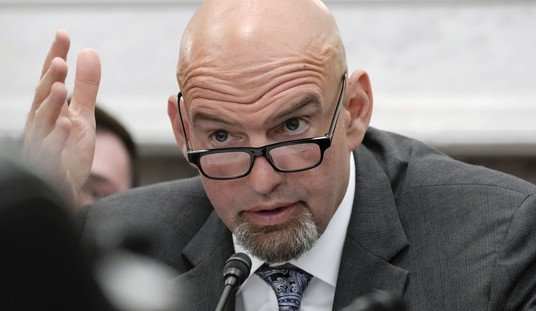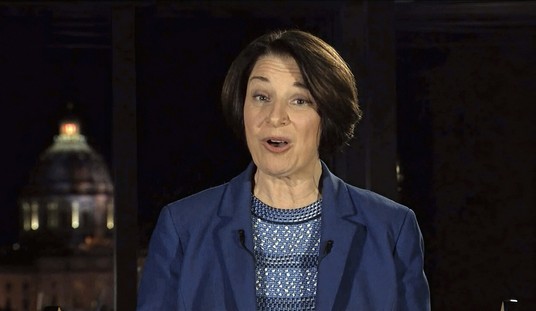Just one user’s experience, but he’s a noteworthy user: It’s Charles Ornstein, Pulitzer winner and author of that much-linked piece a few weeks ago about a couple in San Francisco who found their new O-Care coverage worse than their old plan in nearly every way. Greg Sargent claimed this morning that the big Healthcare.gov “fix” this weekend had bought O some extra time with Democrats on the Hill, but we’ll see. No doubt Ornstein’s piece is making the rounds in the Capitol as I write this, with plenty of sideways glances exchanged.
Tick tock.
After a glowing news conference yesterday citing “night and day” progress on HealthCare.gov, I decided to log in this morning and take the Web site for a test drive, as I’m sure many others are doing. Early reports had been promising. What I found was hardly encouraging — long delays loading pages, an endless circle of tasks (some already completed) and ultimately an error message.
The load-time issues (sometimes more than a minute) reminded me of the problems users encountered in the very first days of the Web site, which handles health insurance enrollment for residents of 36 states. It also appears to contradict what Health and Human Services officials said had been fixed…
Additionally, once I had completed and submitted my application and verified my identity, the site told me that I was missing information and had to review it again. Nothing was missing. Ultimately, I got an error message telling me to come back later.
Follow the link for screenshots and a transcript of his exchange with a technician, who could only urge him to try logging out, waiting half an hour, and then logging back in. Ornstein wasn’t the only reporter with bad luck today either:
http://t.co/J3UFQVEjIJ "has a lot of visitors right now," offering option for users to leave email, come back later pic.twitter.com/QT9BOEepFt
— Jim Acosta (@Acosta) December 2, 2013
The caveat here, as lefties will rush to note, is that traffic was bound to be unusually heavy on the first business day after the November 30th deadline. Thousands of curiosity-seekers like Ornstein are surfing over to the site to see how it performs; eventually they’ll get bored, the traffic load will lighten, and it’ll function better. HHS freely admits that it’s designed to handle only 50,000 users at a time now, right? Well, we’re probably at that mark today. Question, though: What happens as we inch closer to the December 23rd deadline and people who are desperate for coverage start clicking over to sign up? Traffic is bound to be heavy the week before D-Day, and maybe even before that. How many people will be locked out?
In hindsight, O and Sebelius might have been better off not announcing November 30 as the critical date for repairs in the first place. They could have said they were improving the site via an ongoing process and that things would be better every day. That would have averted the problem of curiosity-seekers, but then that goes back to my point in the last post about Obama needing to balance technological triage against political triage. He had to announce a deadline for repairs, not because it was technologically necessary but because Democrats demanded some assurance. He chose politics over sound policy in this case — just as he did in choosing to let insurers un-cancel plans — and now he’s paying for it today and for who knows how long with bad PR about a site that still doesn’t work.
Even if Democrats aren’t ready to abandon ship yet, at least one state exchange is:
Federal officials said they had largely succeeded in repairing parts of the site that had most snarled users in the two months since its troubled launch, but acknowledged they only had begun to make headway on the biggest underlying problems: the system’s ability to verify users’ identities and accurately transmit enrollment data to insurers.
One of the leading states operating its own exchange is considering ways to decouple itself from the federal infrastructure it relies on to confirm residents’ eligibility for federal tax credits. That technology has been affected by planned and unplanned outages.
James Wadleigh, chief information officer of Connecticut’s exchange, said he was looking at having a new vendor support identity verification in addition to the federal vendor. He also said he wanted to be able to tap state databases, such as the labor department’s, to validate incomes and was seeking a way to prove people were legal residents without depending on U.S. data.
Fearless prediction: Within the next week, the White House and HHS will start urgently encouraging people who clearly make too much to qualify for subsidies to avoid the site entirely and enroll directly with individual insurers. That’ll be embarrassing, but it’s the easiest fix available to them. They could publish the income cut-off numbers on the front page of the site with a disclaimer urging people who are above those cut-offs to use eHealthInsurance.com to research insurance plans offered in their home state and to sign up with their preferred company once they’ve settled on one. That would end up creating a two-track system for enrollment, one for the poor who are stuck with Healthcare.gov in order to qualify for subsidies and one for people who are better off, but the diverted traffic might lighten the load on the website enough to make it viable for the next few weeks.
Ezra Klein’s Wonkblog is showcasing a few success stories, naturally, but read deep into the article and you’ll see that even those come with asterisks. One guy was able to enroll easy peasy in under an hour — and then discovered there was a $3,000 discrepancy on cost-sharing between what the website told him and what his insurer told him. Gulp.
Update: Oof.
On CMS call, Miami Herald reporter says he's hearing local navigators are having a harder time enrolling people today than before.
— Sarah Kliff (@sarahkliff) December 2, 2013
Three reporters from major papers – WashPost, LAT, WSJ – asked for the 834 error rate. None of us got answers. Frustrating.
— Sarah Kliff (@sarahkliff) December 2, 2013
The “834 error rate” refers to the application info transmitted on the back end of Healthcare.gov to insurers. Kliff wants to know how frequently that info is garbled or incomplete. No answer.








Join the conversation as a VIP Member